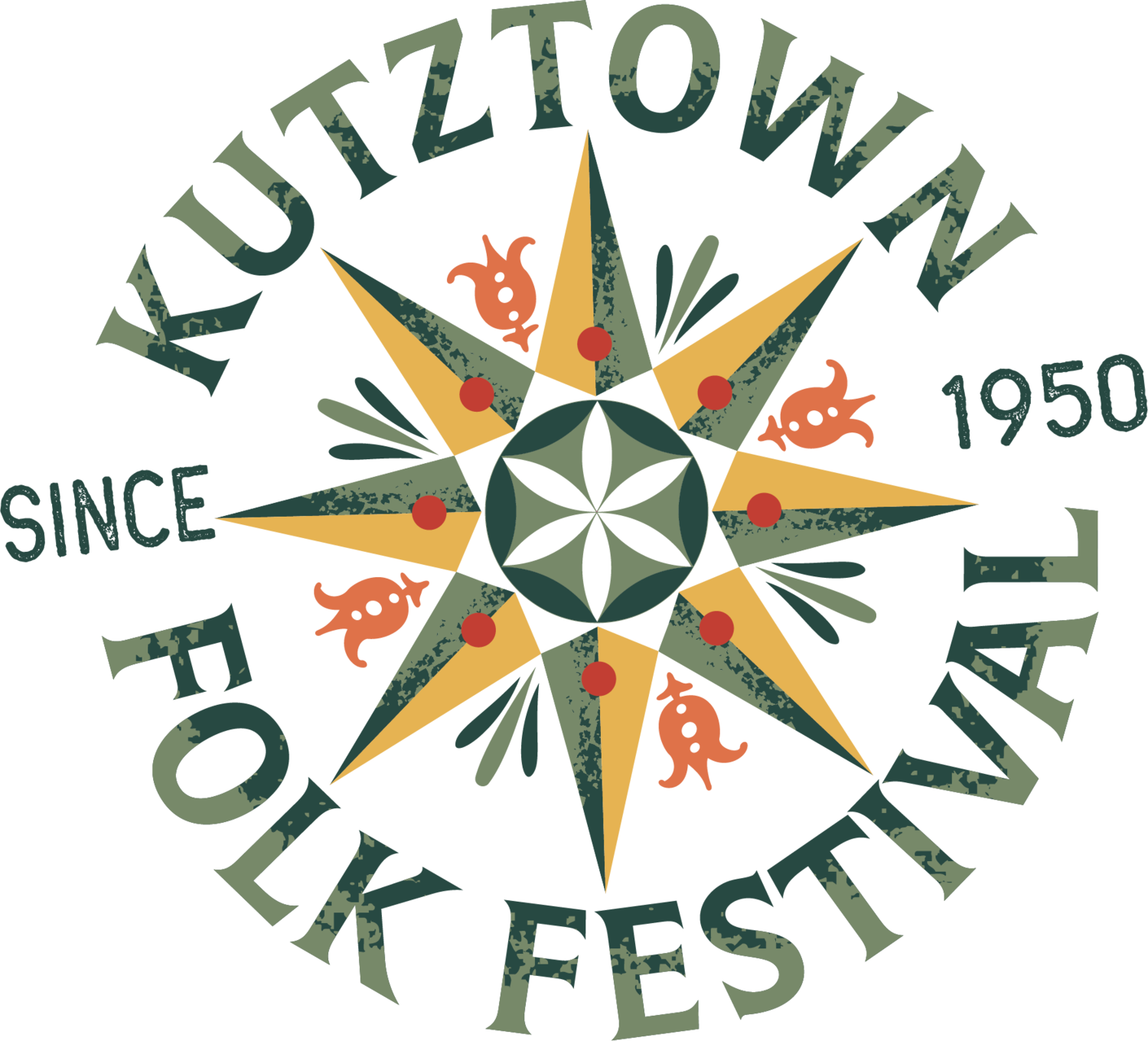Yes, You Are In Pennsylvania Dutch Country!
For 64 years the Kutztown Folk Festival has celebrated the traditions and culture of the Pennsylvania Germans, known better as the “Pennsylvania Dutch.”
As you might expect, Pennsylvania Dutch history and traditions abound in the Kutztown area. Within a short drive from the Festival grounds are 19th century stone farmhouses, Swiss bank barns with the familiar barn stars or “hex signs,” and fields that have been plowed and have provided sustenance for families for over two centuries!
The Kutztown University Pennsylvania German Heritage Center, less than a mile from the festival grounds, is a living museum of Pennsylvania Dutch culture and is certainly worth a visit.
Old Order Mennonite farms dot the countryside, and horse and buggies are an every-day sight on roads in and around Kutztown.. Although not as commonly heard today as in decades past, many Kutztown area residents still speak some of the Pennsylvania Dutch dialect. In fact, older residents speak Pennsylvania Dutch fluently. You may very well hear conversations in the dialect as you walk around the fairgrounds today.
You are in Pennsylvania Dutch country! But, who are the Pennsylvania Dutch? When did they come to America? Why did they come, and what are the differences among them? In this article we’ll try to answer these questions.
First of all, “Dutch” is the Americanization of “Deutsch” or German. Those people known as the Pennsylvania Dutch are Germans who arrived in our region in large numbers from the late 1600’s to the early 1800’s. They were mainly from the Pfalz (or Palatinate) region, along the Rhine River in Germany. In many cases they had emigrated there from Switzerland or from other German speaking areas in central Europe.
In the great tradition of immigrants to America, they left their homes in Europe for religious and economic reasons, and to escape the devastation of wars. The people living in towns and villages along the Rhine suffered the tragic political consequences of being in the area of Germany near the border with France. For 200 years their homeland was contested between German princes and French kings. New rulers meant severe disruptions in their lives. In many cases the people were denied the right to worship as they chose, they were very heavily taxed, and they had few rights.. Many were forced to serve against their will in their ruler’s armies.
When William Penn established his colony in America in 1680, under a charter granted by the King of England, he encouraged the immigration of a diverse population including Germans from the Pfalz. By the mid-1700's, thousands of German families had settled in southeastern Pennsylvania and they grew in number to become over one-third of the colony’s population.
Some of the Pennsylvania Germans belonged to the Amish and Mennonite “plain people” sects which settled mainly in Lancaster County, although significant numbers of Mennonites established themselves in Berks County and are a presence today in the Kutztown area. However, the large majority of Pennsylvania Germans were “church people” who belonged to the Lutheran and Reformed Churches, and they spread throughout Berks County, the Lehigh Valley, and parts of Schuylkill County.
They brought with them their culture, a very strong work ethic, and the language of the old country that would have a strong influence in the cultural development of southeastern Pennsylvania. For these immigrants, America was a breath of fresh air. If they worked hard, they could do very well. They prized the freedom and new opportunities for their families they found in America - so different from their native Germany!
To the English-speaking settlers in the region, they were the “Dutch” – a corruption of “Deitsch”, the expression that developed in the local Pennsylvania German community. Their Pennsylvania German language dominated in the farm areas and small towns of the region through the 19th and into the first part of the 20th centuries. Today, familiar names of some of the early settlers dot the maps in Berks County and the Lehigh Valley in hamlets and towns such as Krumsville, Butztown, Breinigsville, Shoemakersville, Schnecksville, and Kutztown.
The Pennsylvania Dutch dialect has its roots in the German language as it is spoken today in the Rhineland-Pfalz region of Germany. With a little care, and patience, persons on both sides of the Atlantic can easily carry on a conversation. It is astounding that so much in the language is intact after 200 years of “Americanization” and separation from the mother tongue.
Almost all of the Pennsylvania German settlers in our region were farmers. The rich soil of southeastern Pennsylvania was ideal farmland and the settlers prospered. These resourceful people were also known for their colorful quilts, pottery, and tinware. Their folk art is exquisite and includes fraktur (inscriptions on parchment for special family occasions such as weddings or baptisms), and scherenschnitte (delicate paper art). These and many more examples of Pennsylvania Dutch folk art and crafts are available at the Festival.
Various programs about the Pennsylvania Germans are presented on stage at the Festival. They are listed inside this booklet. Also, visitors who are interested in learning more about the Pennsylvania Dutch are invited to stop by the Grundsau Lodge booth in the Nachbarshaft Haus (neighborhood house). Members of the Grundsau Lodges will be happy to provide information and to answer your questions.
